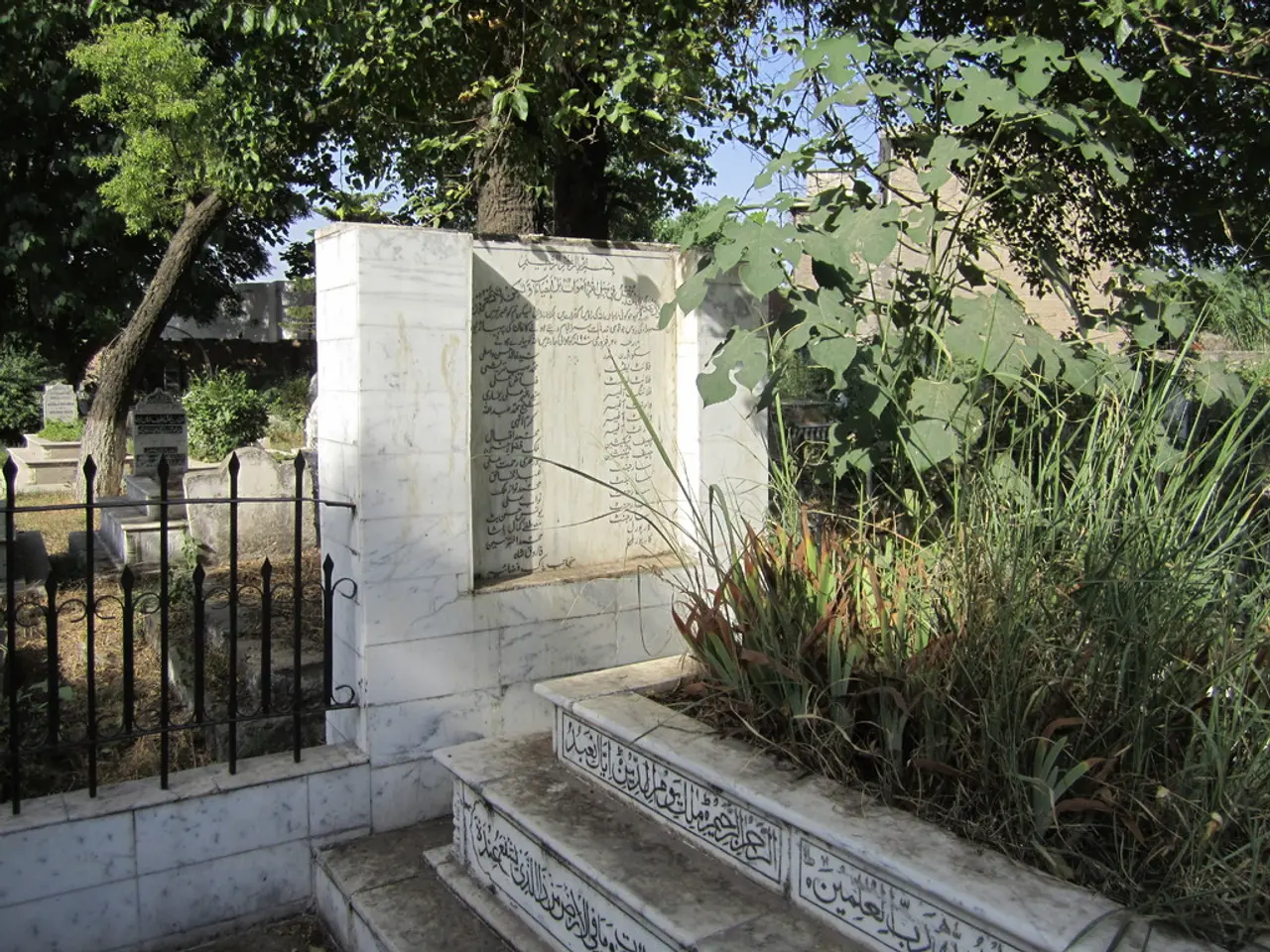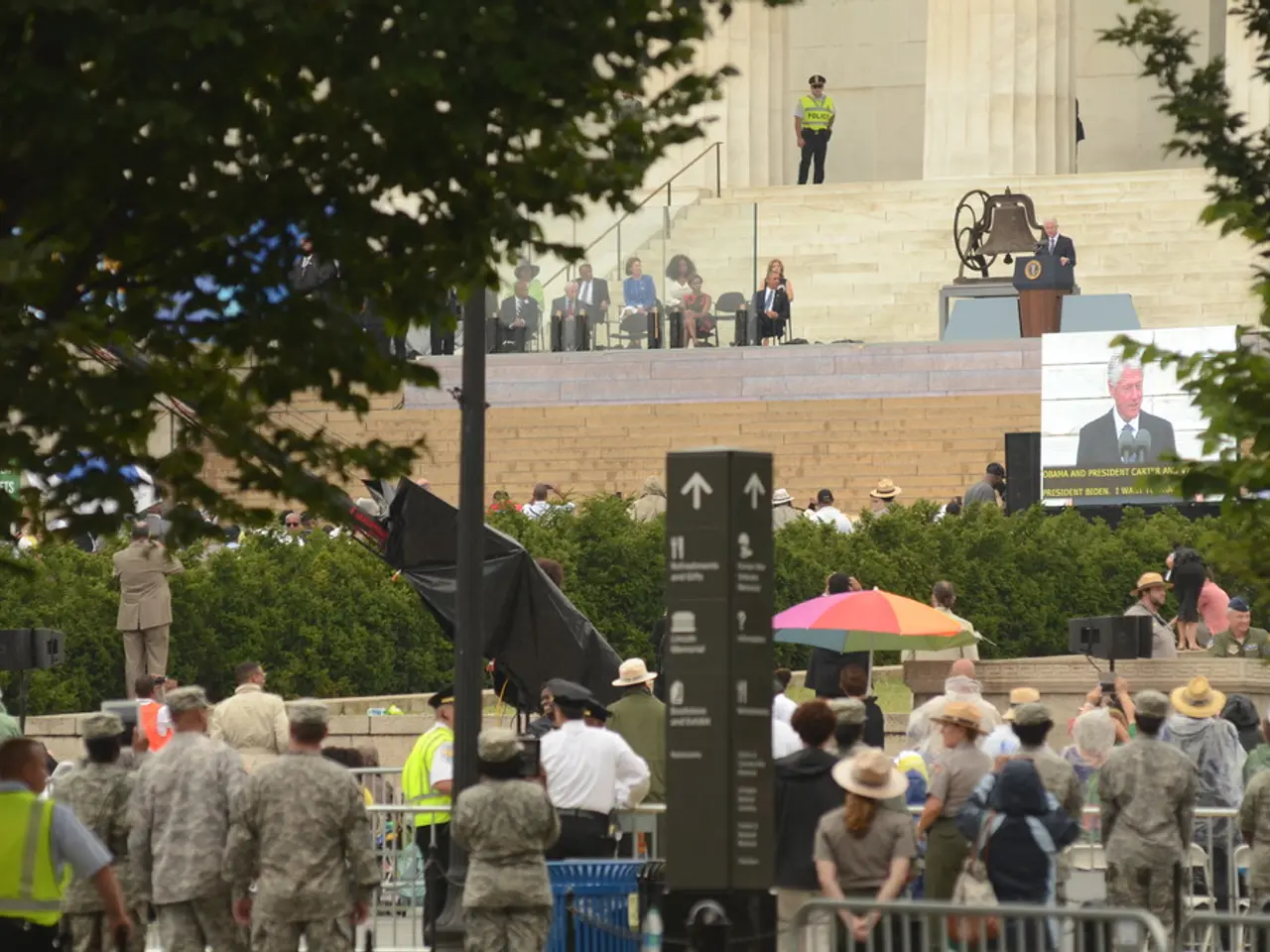A remembrance of the deceased and a search for hope persists in the Ahr Valley, four years post-flood, as the region grapples with reconstruction and fractured trust.
Four years have passed since the catastrophic flood that ravaged the Ahr Valley in July 2021, claiming 136 lives and causing widespread destruction. The region is now in a state of recovery, with visible signs of progress, yet the path to normality remains challenging.
Reconstruction and flood protection efforts have been underway since the disaster, but they face significant hurdles, particularly in addressing sensitive infrastructure and resilience building.
The focus of the reconstruction processes has predominantly been on repairing damages and compensating losses, rather than enhancing resilience against future floods. This approach has limited the capacity to improve protection measures tailored to the specific vulnerabilities of critical infrastructures and population groups.
For instance, facilities housing vulnerable populations, such as the "Lebenshilfehaus" care home for people with disabilities and the Levana School for children with special needs, suffered severe damage or tragic losses during the flood. These examples highlight ongoing challenges in protecting sensitive infrastructure to prevent high casualties in future events.
Secondary impacts, such as loss of teaching time at schools, are also being addressed as part of the reconstruction efforts, emphasising the wide-ranging consequences of the flood beyond immediate physical destruction.
Recent studies continue to analyse the flood event's dynamics to improve hazard understanding, which is crucial for better flood protection design and land-use planning in the valley.
The old town of Ahrweiler has been rebuilt and shines in new splendour, with new shops and gastronomy. However, trust in the state and politics in the Ahr Valley is deeply shaken, with many feeling politics did nothing to help. The authorities in the Ahr Valley continue to demand a 1:1 reconstruction, rather than a future-oriented model as suggested by the CDU.
Progress on the reconstruction fund is currently stuck at hospitals and schools, flood protection, and bridge construction. Deutsche Bahn is currently constructing new bridges and laying new tracks throughout the valley, with the entire Ahrtal line expected to be completed by the end of 2025, with trains running every 20 minutes.
The ruin of the historic hotel in the Ahr Valley, first mentioned in 2024, remains as the owner is missing, and the municipality is powerless. Only a few hundred people attended the official memorial service in the Kurpark, with only a few politicians present. A visitor from North Rhine-Westphalia, who experienced a flood in his Eifel town, expresses that they got off lightly compared to the Ahr Valley flood in 2021.
Every year, at 9:00 PM, each church in the Ahr Valley rings a bell for five minutes to remember the dead, losses, and pain, followed by ten minutes of ringing as a sign of new beginnings and a thank you for all that has been accomplished. The most visible sign of the new beginning in Dernau is the road bridge over the Ahr, behind which the new Vinothek of the Winzergenossenschaft Dagernova stands. Despite the progress, the Ahr Valley is still fighting for normality, with reconstruction efforts visible but trauma still lingering.
The mayor of Ahr Valley, Guido Orthen, emphasises the importance of preserving and passing on trust, while remaining critical of politics. Minister President Alexander Schweitzer acknowledges that more efforts may be needed for private reconstruction and addressing traumas. Barrier-free expansion of a primary school, flood-adapted construction of a house, and modernized heating systems are not being funded or approved.
As the Ahr Valley continues to rebuild, it faces the challenge of balancing the need for resilience against future flood risks with the desire for a return to normalcy. The region's resilience will be tested in the coming years, and it remains to be seen how the community will adapt and grow in the face of adversity.
- Despite the reconstruction efforts focusing on repairing damages and compensating losses, there is a need to enhance resilience against future floods, especially in protecting sensitive infrastructure like care homes and schools.
- The general news often highlights the challenges in protecting sensitive infrastructure, such as the "Lebenshilfehaus" and Levana School, which suffered severe damage during the 2021 flood, to prevent high casualties in future events.
- In the realm of environmental science and climate-change studies, understanding the dynamics of the flood event is crucial for designing better flood protection and implementing land-use planning in the Ahr Valley, thus improving resilience over time.







